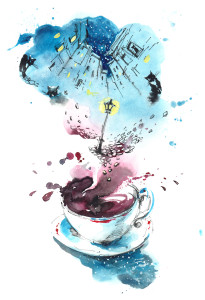
The main advantage of NaNoWriMo is the shared energy and impetus to get words onto the page, without worrying about whether they are genius or not. I’ve done it several times in the past, and always managed to either hit the 50,000 word mark or come within a few thousand words of it. While I don’t usually participate in local NaNoWriMo events, like the various write-ins at coffeeshops, libraries, and associated institutions, I do appreciate the feeling it brings of being part of a vast swell of words.
I’ve been mulling over whether or not to participate this year and finally swung into the Aye side. I’ve been having trouble getting my daily word count in lately (this has been a very weird year) so I’m signing up and will be doing daily posts. I also want to be able to cheer on students and friends who are also participating. You can find me on the NanoWriMo site here.
My aim is to:
- Finish the unfinished scenes from Hearts of Tabat so I can finally start getting that to beta readers.
- Finish three bespoke stories (one for the upcoming two-sided collection).
- Finish at least one story for the Patreon campaign.
One thing I’ve learned is that you can put some prep into NaNo beforehand to maximize your success.
- Preplan what you’re going to write. You don’t have to have an obsessive outline (although it’s not a terrible idea) but pantsing is more likely to lead to the terrible moment where you’re staring at the page, telling yourself that genius must occur, and then deciding to go play Candy Crush instead. I like the beat method, where you describe the scene and roughly what will occur: They make a fire. Ben makes tea. Else raises the issue of the hunters again. Ben refuses to talk but spills the tea. They hear something in the underbrush. A wolf jumps out.
- Clear the decks. This is not the time to take on extra projects, plan to acquire better habits, or quit smoking. Make sure you have time to write, and that you won’t have things that occupy cycles in your head with worrying about them.
- Figure out your schedule. Actually sit down and plan the schedule: I will write every weekday and Sunday but not worry about Saturdays because that’s a busy day. Think about the events of the month and factor those in: I will write 2500 words a day so I can finish before Thanksgiving travel. I will take the day of my birthday off. I will write extra the third week so I can goof off that weekend. Etc.
- Plan your rituals. Where and how will you write? Every weekday I will go to the coffee shop from 1 to 3, turn off social media, and get words in. If I don’t hit my daily word total, I’ll get up early the following day and get an extra 500 in. Make rituals something that drive productivity, not impede it — don’t get in a situation where you can write only under specific circumstances (if you can avoid it).
- Line up some writing prompts. Words are what matter during NaNoWriMo, and it’s okay to write scenes or other chunks that may not go in the finished version. Now is not the time to worry about that — just get the words in and see what happens. So line up some things to write about.
- Reward yourself – not just at the end but along the way. I’m a big believer in the power of bribing yourself. Promise yourself some treat, not just for finishing overall, but for hitting your goals each week. It doesn’t have to be a big deal, but something you might not otherwise do: If I hit my goals each week, I will take myself out to lunch the following Monday. If I finish overall, I’ll buy those books I’ve been wanting.
- Assemble your cheering squad. Got friends or family who are also participating? Sign up to cheer each other on. Let the people who are good about encouraging you know what you’re doing and how they can best help you.
- Tell yourself you’re going to make it. Visualize your success and how lovely it will be to have all the words under your belt. Tell yourself you can do it, and keep that cheerful internal encouragement going throughout the month.
- Be accountable. Figure out how you can track what you’re doing. I’ll be using the NanoWriMo site as well as posting word counts and snippets on this website.
Are you participating in NaNo this year? What will you be working on?






10 Responses
RT @Catrambo: Nine Ways to Rev Up For NaNoWriMo 2015: https://t.co/N8EIUppiDD
RT @Catrambo: Nine Ways to Rev Up For NaNoWriMo 2015: https://t.co/N8EIUppiDD
RT @Catrambo: Nine Ways to Rev Up For NaNoWriMo 2015: https://t.co/N8EIUppiDD
9 ways to rev up for Nanowrimo – https://t.co/34nLNQs3fN
RT @Catrambo: 9 ways to rev up for Nanowrimo – https://t.co/34nLNQs3fN
@Catrambo “clear the decks” – good reminder, and timely for me. I’ll be on your cheering squad!
RT @Catrambo: Nine Ways to Rev Up For NaNoWriMo 2015: https://t.co/wmmOrrHhok
9 Ways to Prep for NaNoWriMo – https://t.co/34nLNQs3fN
RT @Catrambo: 9 Ways to Prep for NaNoWriMo – https://t.co/34nLNQs3fN
RT @Catrambo: 9 Ways to Prep for NaNoWriMo – https://t.co/34nLNQs3fN